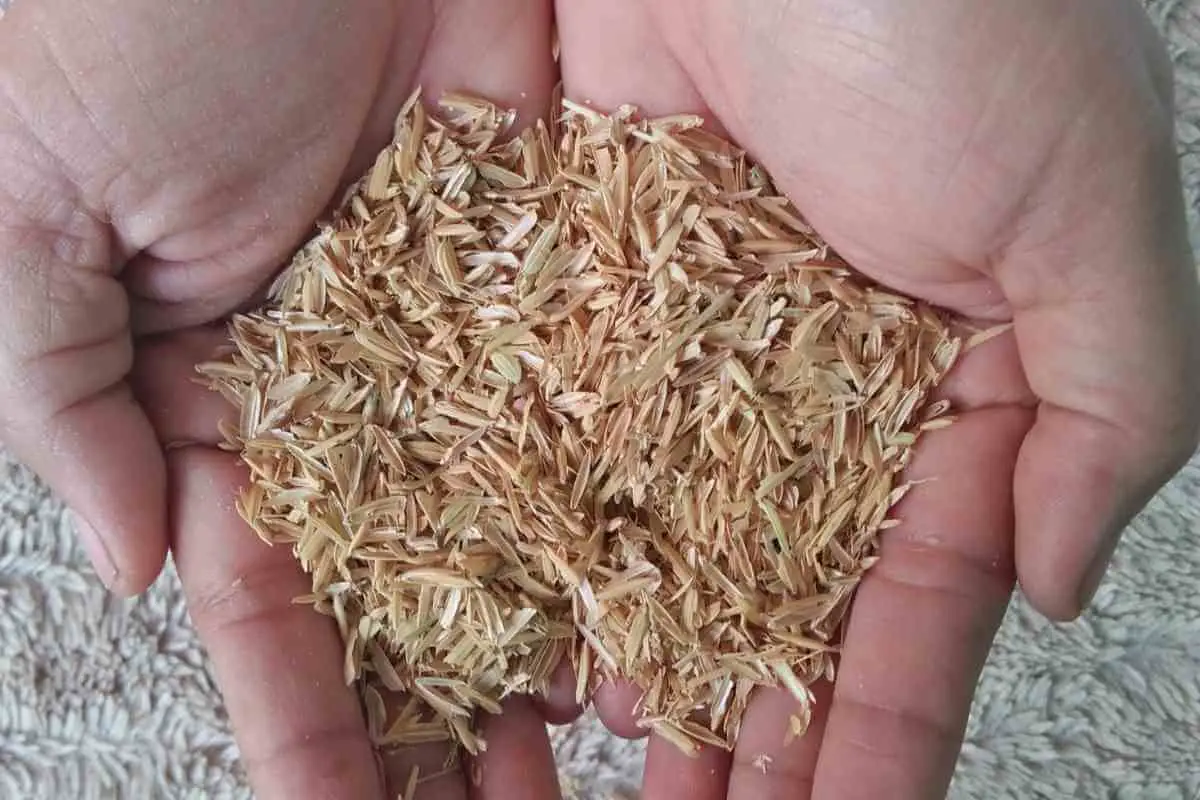There are so many different soil amendments for your soil that it might be hard to keep track.
There’s peat, perlite, sphagnum moss, coco coir, and rice hulls- just to name a few.
That last one you may not have heard of.
Are rice hulls good for potting soil?
Rice hulls are amazing for potting soil. They hold water while also improving drainage, they bulk so the soil doesn’t compact, they improve space for oxygen and air, they add silica for your plants, and they are good for the environment.
What Are Rice Hulls?
Rice hulls are the outer coating on each grain of rice.
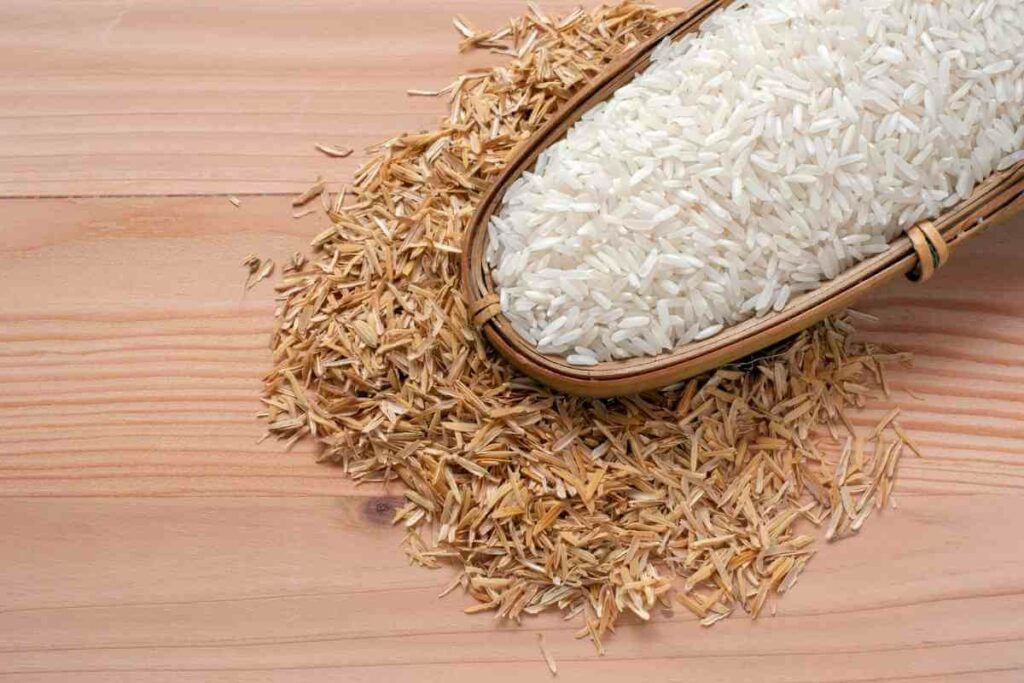
They are extremely high in fibre, making it difficult for humans to eat, so they are removed before the rice is packaged for shipping.
For a long time, the removed rice hulls were burned to get rid of the waste on rice farms.
That is, until they started being used as a charcoal “toothpaste” and an additive in building materials, pillows, and pet food.
As the resource became more popular, it started having more and more uses.
When someone discovered that the pile of rice hulls was decomposing slower than compost, rice hulls started being added to the soil.
Why They Are Good for Potting Soil
Rice hulls are one of the best amendments you can add to your soil.
Water Retention
Rice hulls absorb moisture. As the soil dries out, plants can get the moisture they need from the rice hulls.

This means you won’t have to water as often, and your plants will forgive you if you forget to water them.
Bulk
A huge factor in good soil is the amount of space between soil particles.
If there isn’t enough space between the soil particles the soil can compact over time.
When there is enough space between the soil particles this gives better drainage better airflow more room for root development and space for microorganisms to thrive.
When you add rice hulls, you are adding a larger substrate which prevents the soil from compacting.
Remember This: Rice hulls do decompose over time, and if left alone without being replenished, the soil will be prone to compacting.
Neutral pH
Perhaps one of the most overlooked characteristics of rice hulls is they have a neutral pH.
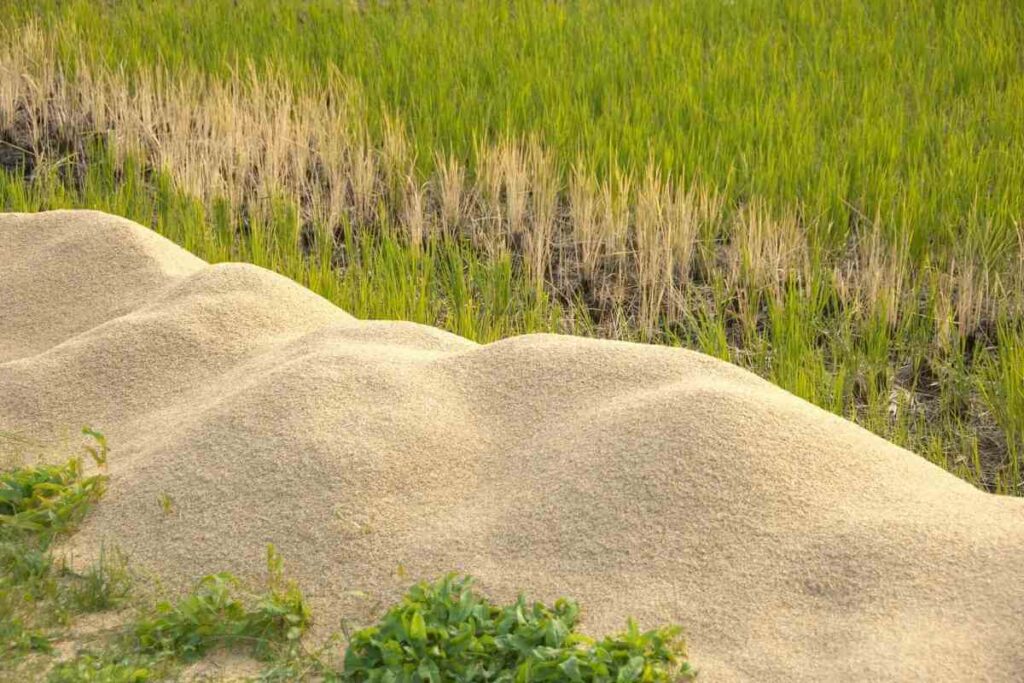
Each plant has a preferred soil acidity, so when adding an amendment to soil, you have to consider how acidic the amendment is, and compensate for the difference.
This can be time-consuming, challenging to add the right balance, and costly when you need to buy different amendments.
This isn’t a problem with rice hulls because they don’t add, or take away, any acidity from the soil.
Inexpensive
In this case, what’s good for the soil is also good for your wallet.
Because rice hulls are removed anyway from rice farming, and the alternative was to burn the hulls to destroy them, rice hulls are sold cheaply.
What Else Are They Good For?
Rice hulls aren’t just great for the soil, they are great for plants too!
All of the above factors have a direct influence on the wellness of a plant.
They need adequate water, space for oxygen and water to remain in the roil, space for root development, and the right acidity depending on the plant.
There are other benefits to the plant.
Mulch
Rice hulls can be used as mulch in your garden or your potted plants.
Simply spread a layer half an inch to an inch thick over the top of the soil.
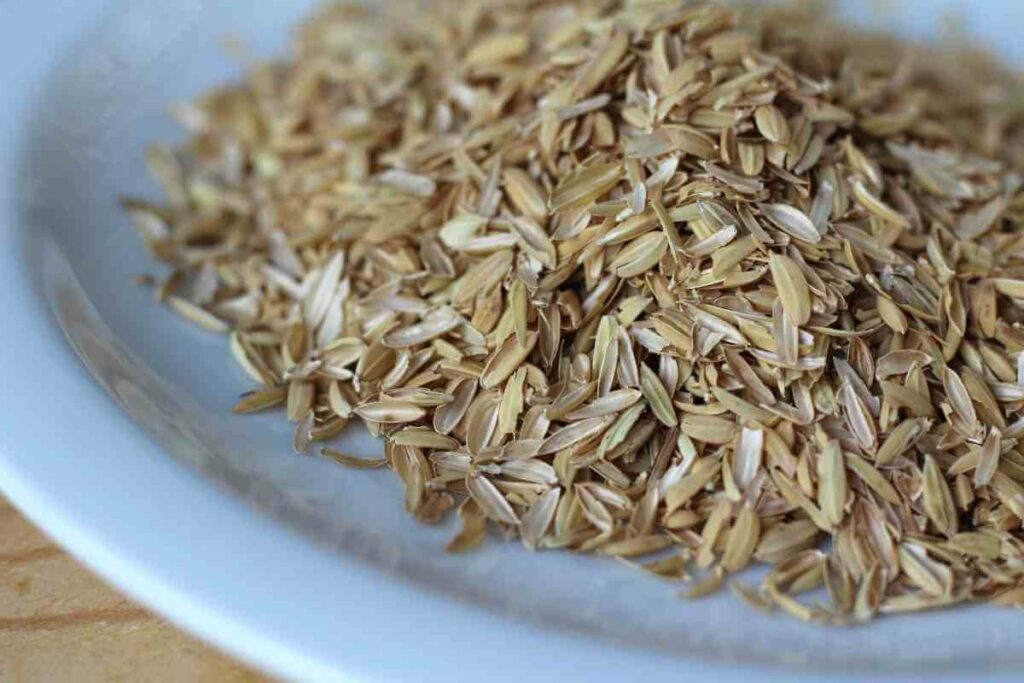
When you water your plants, the rice hulls will absorb water and act as a water reserve when your plant needs a little bit more.
The layer on top of the soil also acts as a barrier so the water evaporates slower than it normally would.
Using rice hulls as mulch will also act as a thermal protective layer.
On the warmest, sunniest days, the rice hulls will keep the sun off the soil so the roots aren’t exposed to extreme heat.
When it’s cooler outside, the rice hulls will keep the heat in the soil so they don’t freeze.
Fertilizer
Rice hulls can work as fertilizer in two ways.
When you add rice hulls directly to the soil, they will decompose.
They have high levels of lignin that slow down decomposition, but they do completely decompose in 2-5 years.
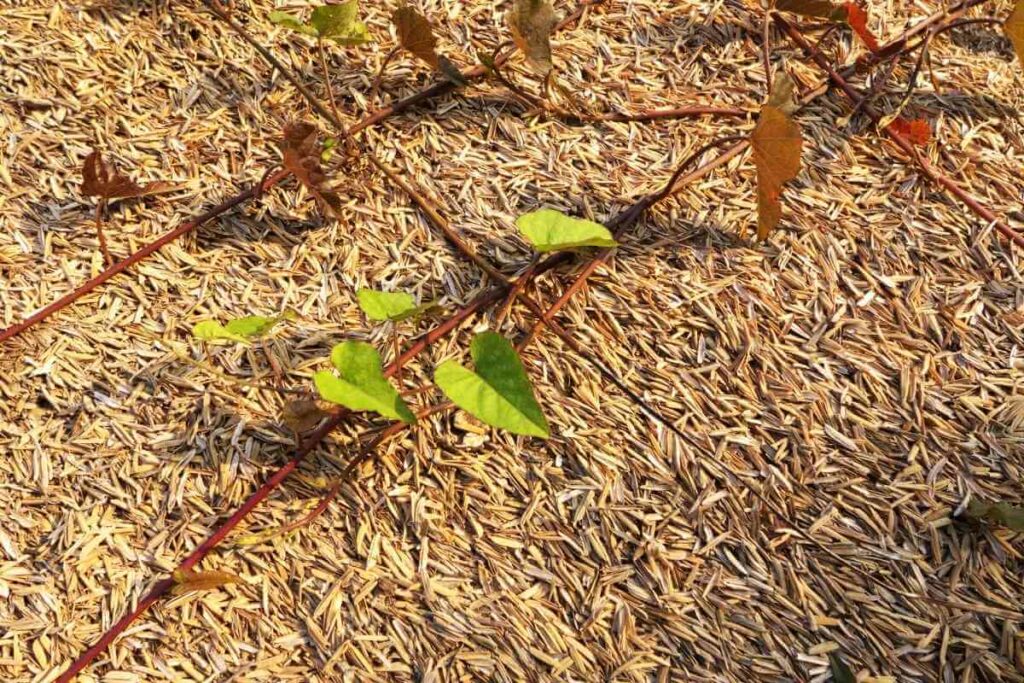
Decomposing matter, or compost, is a great fertilizer for the soil.
You can also buy carbonized rice hulls, or make it yourself. This process partially burns the rice hulls, without turning them into ash.
The burning brings out the best in the rice hulls:
- carbon
- nitrogen
- phosphorous
- potassium
- calcium
- and magnesium
If you’ve bought fertilizer before, you should be familiar with the NPK analysis, or the ratio of nitrogen, phosphorous, and potassium in the fertilizer.
Notice how the three major components of fertilizer are also in carbonized rice hulls?
Silica
Silica is a plant “superfood”.
It is a naturally occurring nutrient found in soil and is one of the most abundant nutrients found in the earth.
Silica plays two very important roles for your plants.
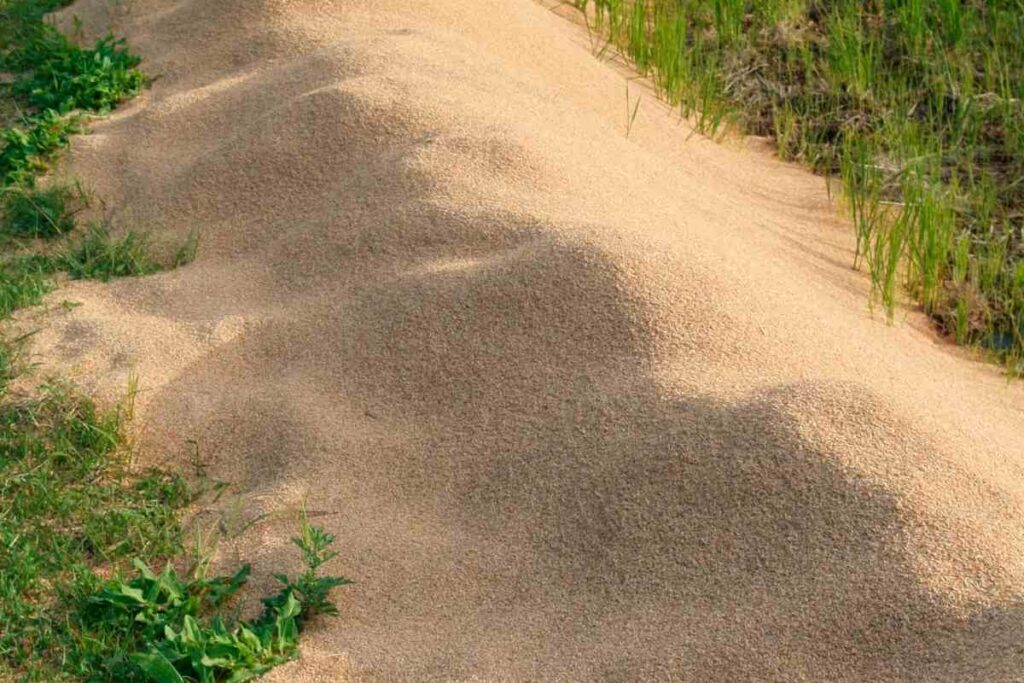
Silica improves the cells of the plant. It strengthens the cell walls and makes the cells more efficient.
As the cells become more efficient, they produce more cells, which you see as plant growth.
The other reason silica is great for your plants is it helps the plant absorb other nutrients.
The bigger and stronger the plant, the more nutrients it is going to need to maintain foliage, flowers, or branches, and strong healthy plants will have an easier time absorbing and processing those nutrients.
And the Environment?
Yes, rice hulls are so great, they are even good for the environment.
You may have heard of perlite, sphagnum moss, or peat as additives for soil. These are all terrible for the environment.
Perlite uses a destructive mining process to harvest the non-renewable glass in cooled lava.
Sphagnum moss and peat moss completely destroy entire bogs that take years to form to harvest both types of moss.

And then there are rice hulls, which appear on every grain of rice.
Almost 496 million metric tons of rice were harvested last year in 2020, and it is a renewable resource.
That means if the same amount of space is used, another 496 million metric tons will be produced again this year.
The rice hulls used to be removed, tossed aside, and burned. There was no other way to remove the waste from the rice farms.
Instead: Rice hulls are given the opportunity to go back into the soil and decompose naturally, while benefitting your soil and plants.
Final Thoughts
Rice hulls are great for potting soil, great for your plants, and great for the environment.
They add very important water retention, they improve drainage and airflow, they add silica for your plants, they are inexpensive, great to use as mulch, and they are an eco-friendly substrate?
Why aren’t you using rice hulls yet?
